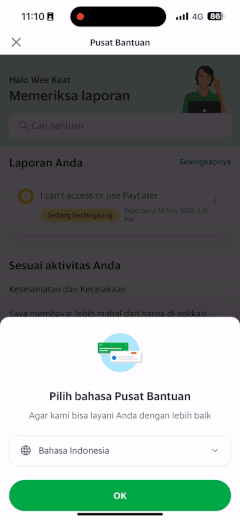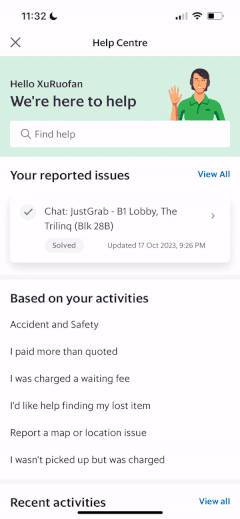Some 130 million Chinese tourists are expected to travel overseas this year, representing one of the largest visitor groups to countries like Malaysia, Thailand, and Indonesia. We’ve found that these tourists are increasingly relying on services on our superapp during their visit, which is why we want to make Grab as accessible as possible for them.
The interface of the app itself is already available in multiple languages, including Chinese, Korean, and Japanese. GrabFood menus across some cities in Southeast Asia can be translated from local languages (e.g. Vietnamese, Thai) into English and Chinese.
But more recently, we developed a solution to reliably translate Grab’s Help Centre articles into Chinese and other languages, using an AI-based machine translation model. The Grab Help Centre houses thousands of articles that address frequently asked questions and provide users with easy-to-grasp self-help solutions.

Since we launched the Chinese language version in November last year, we’ve seen a healthy demand for our new Chinese-language articles. This gives us confidence that our users, whether travellers from overseas or local Chinese speakers, appreciate being able to access our Help Centre in a language they are comfortable with.This eliminates potential language barriers for a more user-friendly experience on our app.
AI translation solution
Hiring a human-powered translation service for this task would have taken up to a hundred days to complete, at a steep per-word cost. The consumer Help Centre’s database contains around 4,500 English articles.
(Read more: How AI helps our search bar seemingly read minds)
So we needed some AI support. After testing and experimenting with local teams, we came up with a solution that combined various off-the-shelf large language model (LLM) solutions to translate the Help Centre articles.
Within a few weeks, we were able to roll out a cost-effective translation solution that reduced translation processing time for a language pair from 100 days to five days.
We rely on user feedback to monitor the accuracy of our machine-translated articles through an upvote/downvote system.
A downvote due to “inaccurate translation” gives us a point of reference for future corrections. As of now, only a small percentage of Chinese Help Centre downvotes were related to translation quality, which reflects the accuracy of the machine-translated articles.
How the translation solution works
To see the translation solution at work, visit the Grab Help Centre (see below). A pop-up window will confirm your preferred language before you access the Help Centre.

Users who select Chinese will get access to the translated Help Centre content.

At present, we’re collaborating with different country teams to generate AI translation solutions in even more languages. We’ll continuously improve our ability to meet the needs of diverse travellers.
3 Media Close,
Singapore 138498
Komsan Chiyadis
GrabFood delivery-partner, Thailand
COVID-19 has dealt an unprecedented blow to the tourism industry, affecting the livelihoods of millions of workers. One of them was Komsan, an assistant chef in a luxury hotel based in the Srinakarin area.
As the number of tourists at the hotel plunged, he decided to sign up as a GrabFood delivery-partner to earn an alternative income. Soon after, the hotel ceased operations.
Komsan has viewed this change through an optimistic lens, calling it the perfect opportunity for him to embark on a fresh journey after his previous job. Aside from GrabFood deliveries, he now also picks up GrabExpress jobs. It can get tiring, having to shuttle between different locations, but Komsan finds it exciting. And mostly, he’s glad to get his income back on track.

